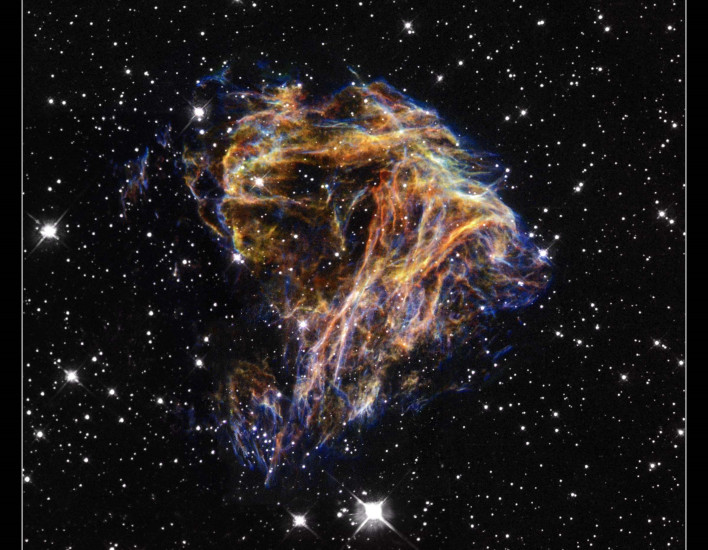A Star Violently Died To Bring You This Jaw-Dropping Image From NASA's Space Telescope
DEM L 190 resembles the "puffs of smoke and sparks from a summer fireworks display." The exquisite filaments are actually sheets of debris from a stellar explosion in a neighboring galaxy. The remnant is from a massive star that died in a supernova blast whose light would have reached Earth thousands of years ago. Hubble first captured DEM L 190 in 2003 (see image below), with the latest image incorporating additional data and improved image processing techniques.

The filamentary material in DEM L 190 will eventually become recycled into building new generations of stars. This is the same process from which our own Sun and planets were constructed, via similar debris of a supernova that exploded in the Milky Way billions of years ago, according to NASA.
The supernova remnant also shelters a very powerful spinning neutron star that may be the central remnant from the initial blast. It is not uncommon for the core of an exploded supernova star to become a spinning neutron star, also called a pulsar due to the regular pulses of energy from the rotational spin.


